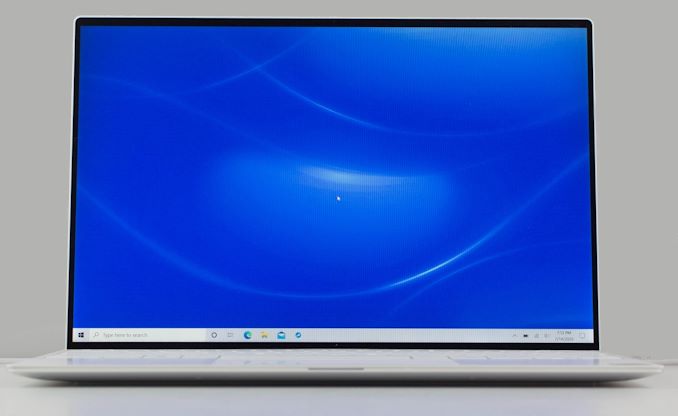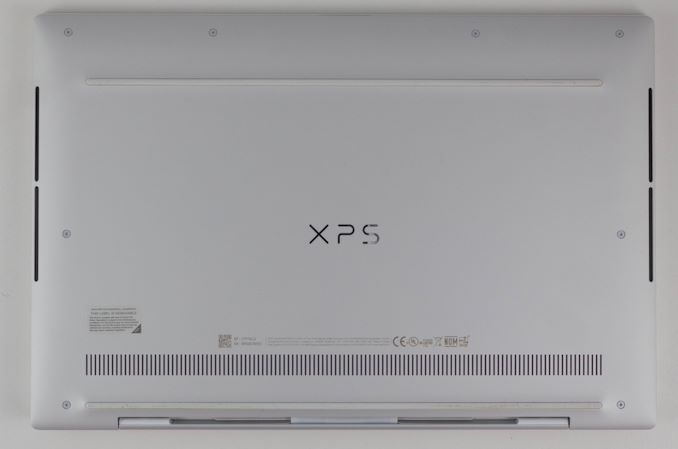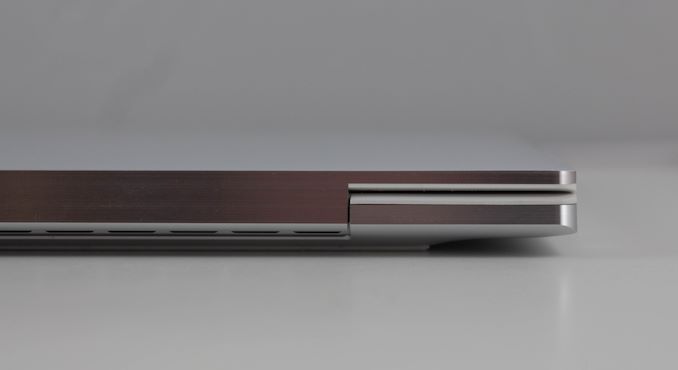The Dell XPS 13 (9300) Review: Return of the King
by Brett Howse on July 16, 2020 10:00 AM ESTFinal Words
Dell’s XPS lineup is one of the strongest in the PC industry. The InfinityEdge display was a revolution, allowing laptop sizes to shrink considerably, while providing the same display size. The new XPS 13 improves on an already excellent pedigree by moving to a 16:10 aspect ratio on the display which further reduces the bezel and keeps the new XPS 13 looking as fresh as ever.
The two color choices are both great, but the Arctic White, with its woven fiber keyboard deck, is really striking. Dell has tweaked this slightly from their original 2-in-1 design by moving back to black display borders, which can help hide the admittedly small bezels even further. The older soft-touch carbon fiber black color is still a great look as well. The refreshed XPS 13 is simply one of the nicest looking notebooks in its class.
The move to Ice Lake in the 2020 refresh is also a welcome addition, mostly thanks to the significantly improved integrated GPU performance, but also because it allows the laptop to support 32 GB of RAM. Coupled with the maximum 2 TB of SSD storage, and the XPS 13 offers plenty of performance for its size. There will be those that lament the lack of an AMD option, as AMD’s latest Renoir is a very potent platform, but the lead time on a notebook like this would preclude that option.
Dell’s decision to move to a 16:10 aspect ratio means that you get a bit more vertical space, which should be beneficial in most productivity scenarios. Of the two display options, unless the wider P3 gamut support of the 3840x2400 display is something critical for a specific workflow, the extended battery life of the 1920x1200 is likely the better option for most people. And, just so it is not forgotten, Dell’s anti-glare coatings are a shot in the arm for the PC industry, providing just 0.65% reflectivity, and when coupled with the very bright display, makes for a winner in almost any lighting condition.
Even the bottom of the XPS is well thought out. Torx screws surround the bottom which allow access inside if needed, and Dell continues to utilize rubber feet which span almost the entire width of the notebook, providing an incredibly solid footprint across a range of surfaces.
Open or closed, the XPS 13 is a fantastic looking device. It backs that up with excellent performance, and plenty of options to fit almost any budget. It is somewhat rare for a premium notebook to start at under $1000 USD, but Dell manages that, if only barely, but the base model now provides 8 GB of RAM and 256 GB of storage, which is much better than some of the XPS 13’s of old, which started with half that RAM and storage for the same price. Dells options are also very reasonable priced, so upgrading from the base model does not instantly launch the price into the stratosphere.
It is great to see Dell update their XPS 13 clamshell notebook to the same internals and design of their previously released 2-in-1 version. It is also great that you can opt for either the clamshell XPS 13, or the convertible 2-in-1, depending on your needs. The convertible offers some increased functionality that you cannot get in a traditional notebook, but there is also a large market that prefers the simplicity of the traditional design. With the XPS lineup, it is your choice.
Finally, in a very rare move, Dell offers not only Windows, but also Linux, giving buyers their choice on what operating system they get. It goes without saying that this is an incredibly uncommon thing on a premium notebook, and very welcome to see. In the case a buyer does opt for Linux, then the the XPS 13 Developer Edition, as it's called, comes from the factory with Ubuntu 18.04LTS.
Overall there is a lot to like about the new XPS 13, and very little to detract from. Dell has yet another winner. With an updated 16:10 display, class-leading battery life, and a fantastic design, the XPS 13 is easily one of the best notebooks around.














224 Comments
View All Comments
Deicidium369 - Friday, July 17, 2020 - link
I agree. OEMs will build what their customers want. I just don't see people clamoring for an AMD over an IntelKorguz - Friday, July 17, 2020 - link
of course you dont, cause you can only see intel, no matter what.vladx - Saturday, July 18, 2020 - link
No we can certainly see AMD with how they fail time and time again to launch reliable products and platforms.Korguz - Saturday, July 18, 2020 - link
seems your god intel seems to be failing quite a lot the last few years.vladx - Saturday, July 18, 2020 - link
Sorry that you're so butthurt that you try to mock others, Intel sells best because they are very reliable unlike AMD.Korguz - Saturday, July 18, 2020 - link
sorry you are butthurt cause your god intel has screwed up so bad the last few years, and that you blind to see anything else.rhysiam - Thursday, July 16, 2020 - link
Oh come on, this cherry picked "17%" claim again? See my post above. The very review you are commenting on shows highly threaded workloads pushing to AMD's advantage in the 34% to 79% range, depending on the specific workload. That is **not** "virtually matching"... and the 4700U is **not** the top Renoir.Deicidium369 - Friday, July 17, 2020 - link
"Summing up the performance metrics, the Intel Core i7-1165G7 has a lead of up to 20% in single-core performance tests while featuring a 10% clock speed advantage over the Ryzen 7 4800U (4.2 GHz vs 4.7 GHz). In multi-core tests, the Ryzen 7 4800U is 17% faster but that is despite the AMD chip having twice the number of cores and threads. But that's the fastest score for the chip with Linux OS which tends to offer higher scores. Compared to a Ryzen 7 4800U on Windows OS, the Core i7-1165G7 leads by up to 35% in single-core while being just 6% slower than its 8 core & 16 thread competitor."https://wccftech.com/intel-10nm-core-i7-1165g7-cpu...
34% higher performance in single core - slightly higher clock, but not 34% higher clocks - that's a nice IPC gain.
Not seeing the 34 to 79% AMD advantage in multicore. I am seeing the multicore being between 17% slower and 6% slower depending on the OS - with 8 cores & 16 threads vs 4 cores and 8 threads.
Just so we are working from the same materials.
Korguz - Friday, July 17, 2020 - link
yea, wccftech is a trust worthy source, arent they mostly a rumor/BS site ?Spunjji - Monday, July 20, 2020 - link
WCCFTech were running with rumours that Zen 2 would hit ~5Ghz for months before it was released, so yeah, I'd say their record isn't particularly reliable.Their comments section is also notoriously full of trolls and jackasses...